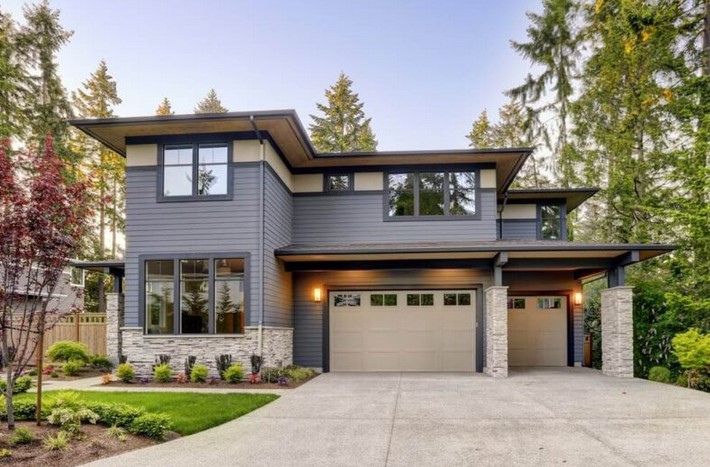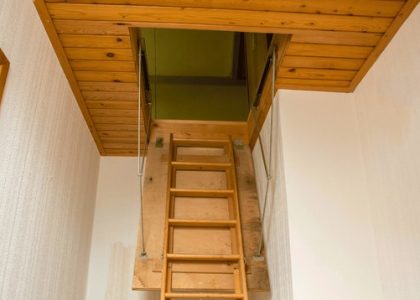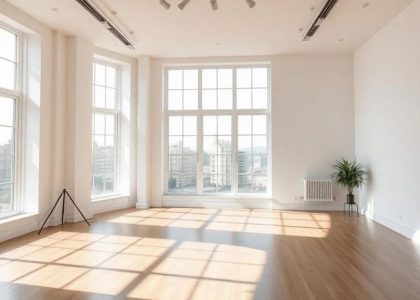
When it comes to maintaining the curb appeal and longevity of a home, exterior painting is one of the most effective strategies. A fresh coat of paint can not only enhance the visual appeal of a property but also protect it from the elements, preventing deterioration due to moisture, UV rays, and harsh weather. However, achieving long-lasting results requires more than just slapping on some paint. There are specific exterior painting techniques that ensure the paint adheres properly, withstands the test of time, and maintains its vibrant finish. This article will explore various exterior painting techniques that help homeowners achieve lasting results while maximizing the durability and beauty of their paint job.
Preparing the Surface for Painting
One of the most critical steps in exterior painting is proper surface preparation. A well-prepared surface is key to ensuring that the paint adheres properly and lasts for many years. Rushing through this phase can result in peeling, bubbling, or fading paint, which can negate the benefits of painting altogether. Here’s how you can prepare your surfaces effectively:
1. Cleaning the Surface
Before applying any paint, the exterior surfaces must be thoroughly cleaned. Dirt, mildew, mold, and other debris can interfere with the paint’s ability to adhere to the surface, leading to premature peeling or chipping. Use a power washer to remove dirt, grime, and any loose paint from the surface. If your home has mold or mildew, a solution of water and bleach (1 part bleach to 3 parts water) can be applied to the affected areas to kill the spores. Allow the surface to dry completely before moving on to the next step.
2. Sanding and Scraping
Once the surface is clean, it’s essential to remove any loose or flaking paint. Use a scraper or putty knife to peel off any peeling paint. After scraping, sand the surface to smooth any rough edges or uneven areas, allowing the new paint to adhere properly. For wooden surfaces, sanding is particularly important as it opens the pores of the wood, providing a better bond with the paint. A smooth, even surface will ensure a more professional-looking finish.
3. Priming the Surface
Primer is a critical step in exterior painting techniques, as it creates a smooth, even base for the paint. Applying a high-quality primer seals the surface, blocks stains, and ensures that the paint sticks effectively. For porous materials such as wood, primer is especially important to prevent the paint from soaking into the surface, which can lead to uneven color and finish. Additionally, if you are painting over a darker color with a lighter one, a primer will help to prevent the old color from bleeding through and affecting the new coat.
Choosing the Right Paint and Tools
The quality of the paint and tools you choose is just as important as the preparation. For exterior painting, it’s vital to select products that are designed specifically for outdoor use. These paints are formulated to resist fading, peeling, and cracking, even in harsh weather conditions.
1. Selecting the Paint
When selecting paint, look for options that are labeled for exterior use. These paints are typically designed to withstand the UV rays from the sun, as well as moisture from rain or snow. Consider whether you need a glossy or matte finish, depending on the look you want to achieve. A glossy finish provides a reflective surface that is more resistant to dirt and moisture, while a matte finish can give a more subtle, elegant look.
It’s also important to choose the right type of paint for the material you are painting. For example, acrylic latex paint is a good choice for wood and masonry surfaces, while oil-based paints work well on metal. Consider the climate of your area as well—some paints are better suited for humid, coastal climates, while others are more appropriate for dry, arid regions.
2. Using the Right Tools
The tools you use can make a significant difference in the outcome of your painting project. A high-quality brush or roller will ensure an even coat of paint without streaks or uneven coverage. If you’re painting a large area, such as a wall or fence, consider using a paint sprayer for quicker and more consistent results. Be sure to select the right brush size for the specific surface you’re working on; for example, a wide brush is ideal for large, flat areas, while a smaller brush is better for corners and trim work.
Investing in quality tools can also make the job easier and more efficient, reducing the time and effort required to achieve professional results.
Mastering the Application Techniques
Once you’ve prepared your surface and gathered your materials, it’s time to apply the paint. The application process is crucial for ensuring that the paint adheres well and provides long-lasting coverage.
1. Apply Thin, Even Coats
One of the most common mistakes in exterior painting is applying too much paint at once. Thick coats of paint can cause drips and streaks, leading to an uneven finish. Instead, apply thin, even coats, allowing each coat to dry before applying the next one. This will give the paint time to adhere properly and create a more uniform finish. Depending on the type of paint and the surface, two to three coats may be necessary for optimal coverage.
2. Use Proper Techniques for Different Surfaces
Different exterior surfaces require different application techniques. For smooth surfaces, like metal or stucco, use long, even strokes to cover the area. For textured surfaces like brick or wood siding, use a dabbing or stippling motion to ensure that the paint reaches all crevices and grooves. If you’re using a paint sprayer, make sure to hold the sprayer at the recommended distance from the surface to avoid overspray and uneven application.
3. Finish with a Topcoat (Optional)
For added protection, consider applying a clear topcoat or sealer over your paint. A topcoat can provide extra durability against UV rays, moisture, and other environmental factors. This is especially important in areas that experience harsh weather conditions or high humidity. Be sure to choose a topcoat that is compatible with your type of paint, and apply it after the paint has fully dried.
Achieving long-lasting results with exterior painting requires more than just applying a fresh coat of paint. It involves a combination of proper surface preparation, choosing the right paint and tools, and using the correct exterior painting techniques. By following these steps, you can ensure that your paint job will not only look great but also withstand the elements for years to come. Whether you’re painting your home’s exterior, fence, or trim, the right approach will yield impressive results. By mastering these exterior painting techniques, you can create a beautiful, durable finish that will protect your home and enhance its curb appeal.



